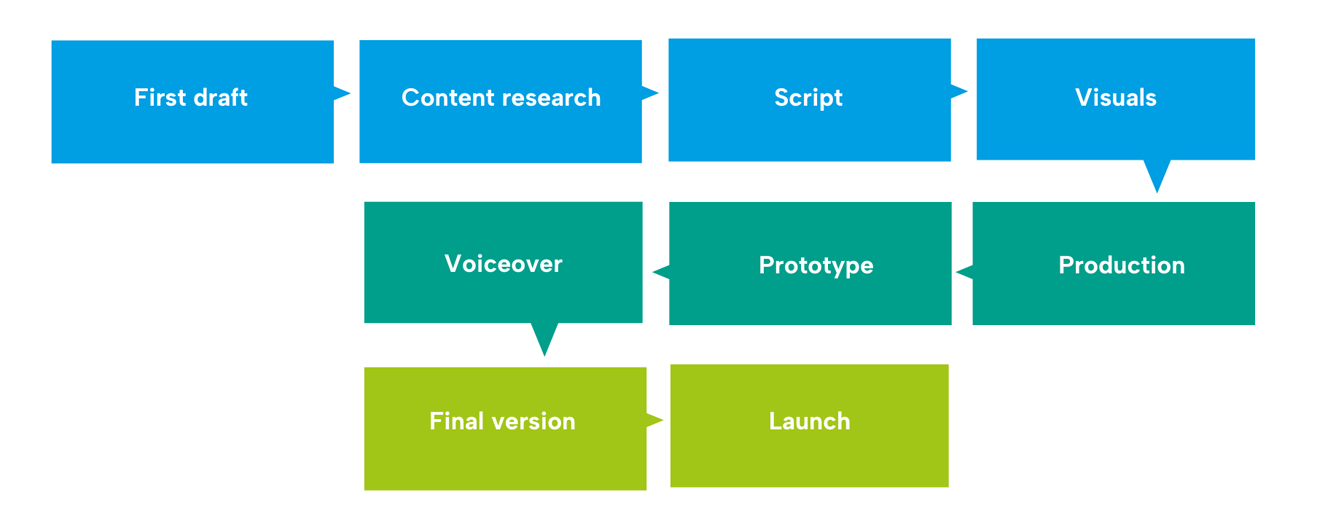Content research
Once you have roughly defined the topics, find the specific sources for the planned learning material. When using content that you have not created yourself, make sure to use the correct source references and licences. You can find freely available graphics, for example, at www.pexels.com or www.unsplash.com.
First draft
In the first draft, you define which topics you would like to realise with which tool and in which form.
You can use the template provided in the next slide.
Script
Now, it's time to write the exact content. In addition to formulating the tasks, descriptive texts and notes, a rough outline of how the text can be underpinned with images can be conceptualised. You can use the template provided in the next slide.
Visuals
If you decide to use any kind of visual representations in your learning material, this would be the time to create those. Remember the image superiority effect: visuals offer a memory advantage. The programme www.canva.com offers free templates for creating infographics or simple charts.
Production
Add your written texts and your visuals into your chosen digital tool to create your digital learning material.
Prototype
Most times, the first version is not the final one. Often you quickly detect areas in need of optimisation yourself. It can also be helpful to have the material tested by someone not involved in its creation.
Voiceover
Sometimes there is the need or possibility to create a voiceover for your material. PowerPoint and Keynote, for example, offer the option to record voiceovers for your presentations which you can then make available to your learners as a video.
Final version
Make any improvements so that your digital material meets your requirements and those of the other testers.
Launch
You can now provide the digital material to the learners according to your planning.


